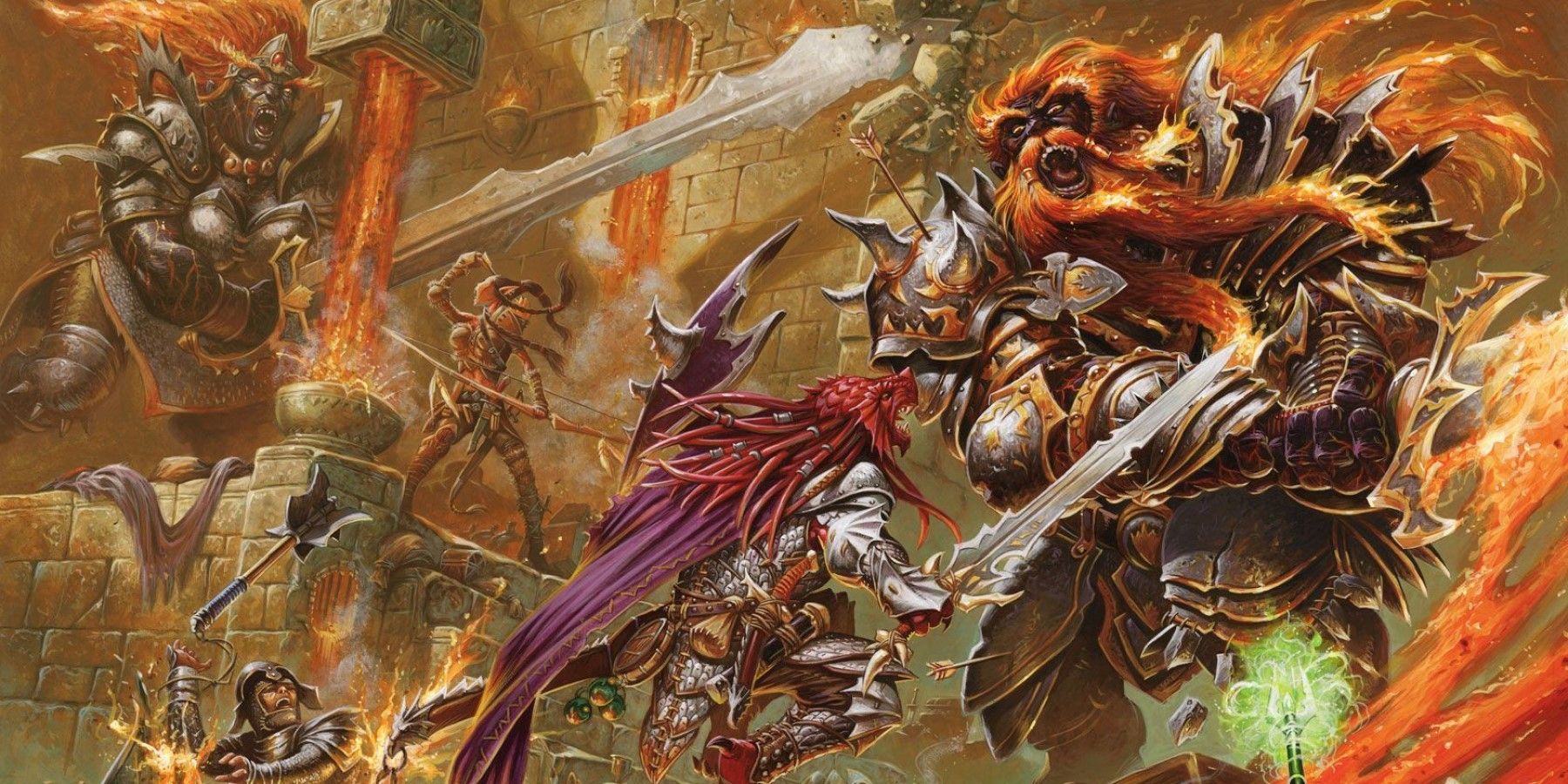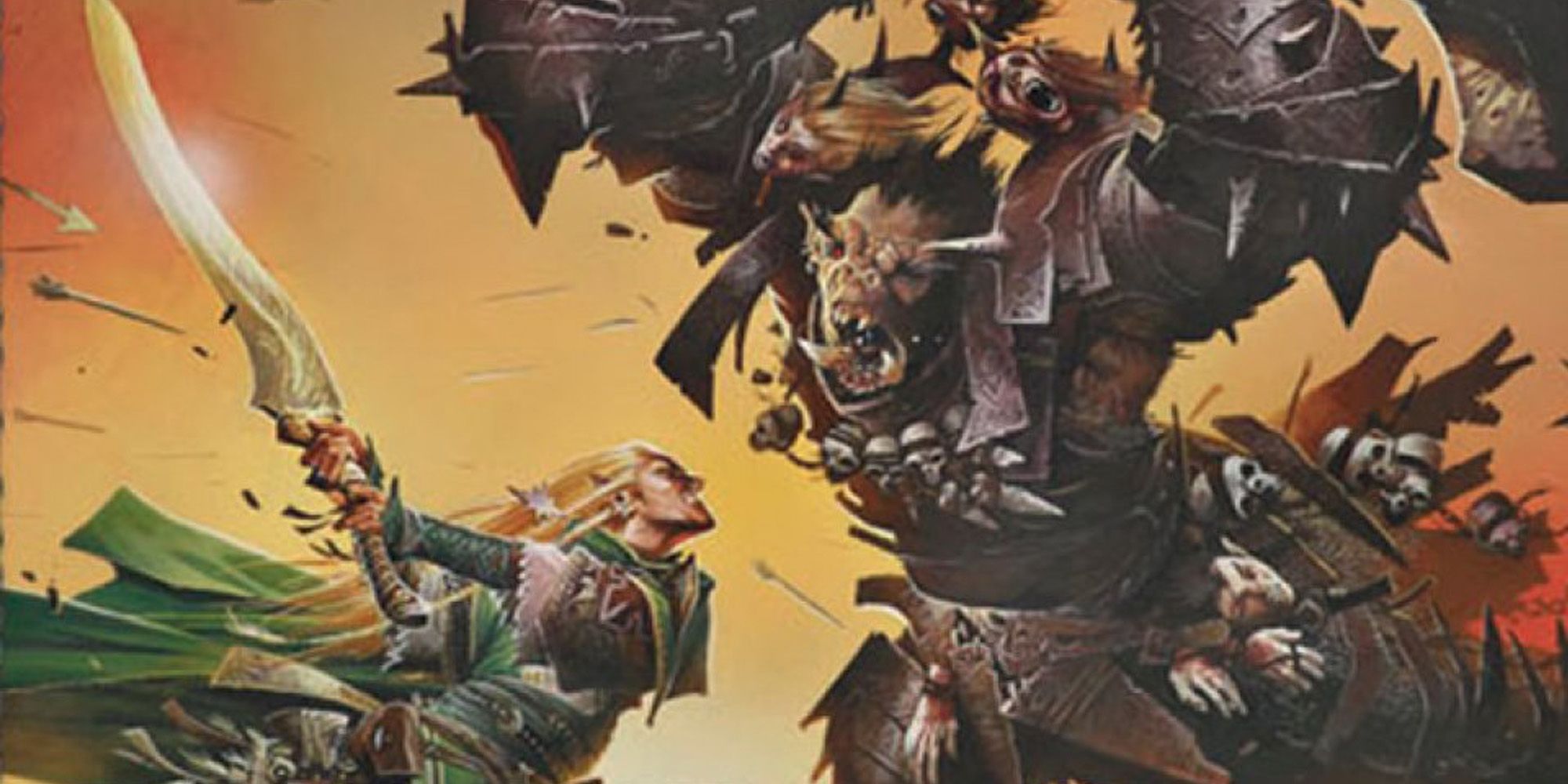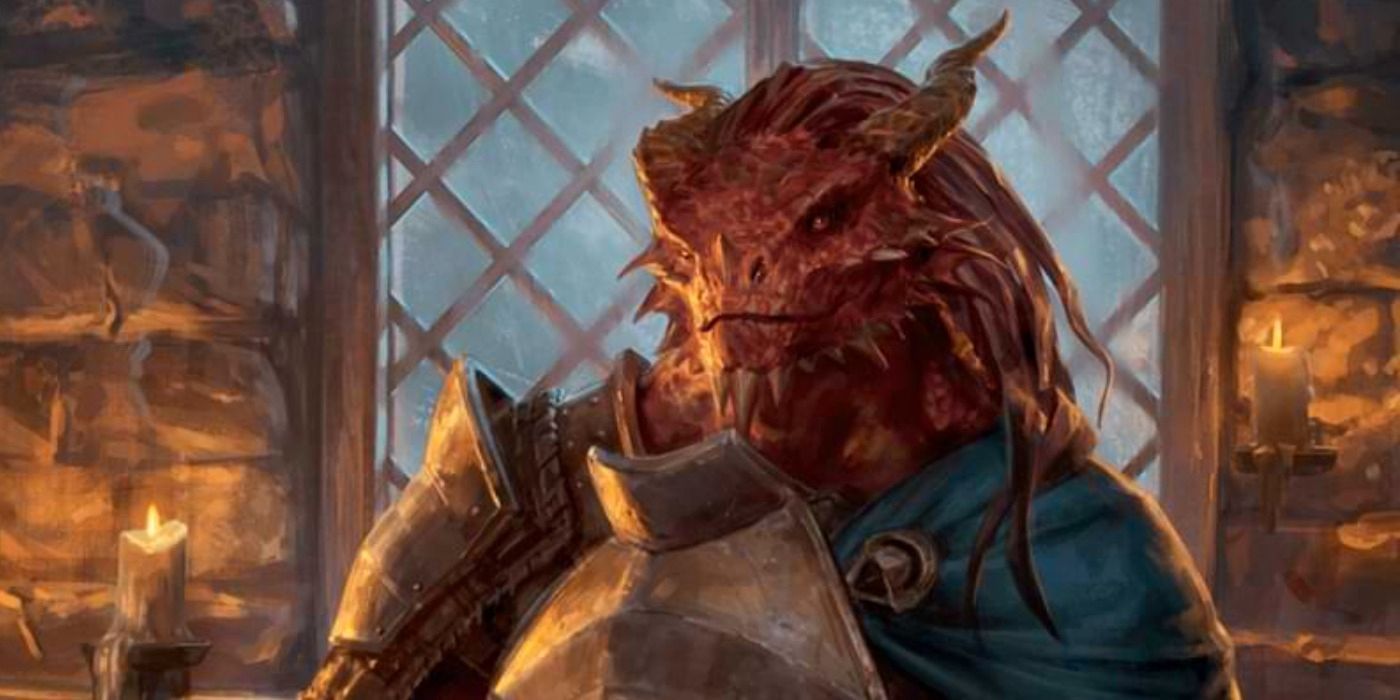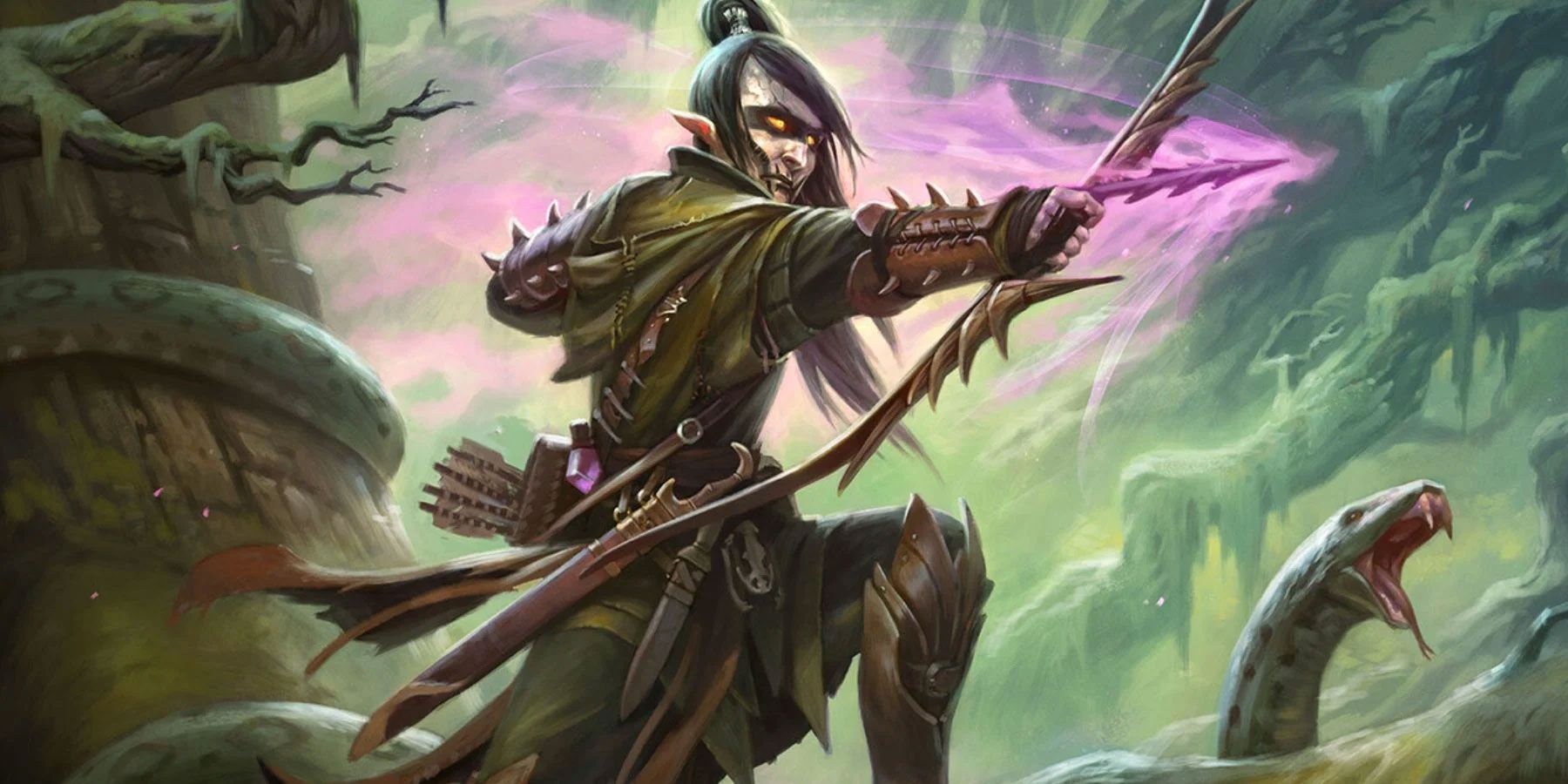It's been eight years since the launch of Dungeons & Dragons Fifth Edition, the most recent iteration of Wizards of the Coast's legendary tabletop RPG. The system has continued to grow over that time, with the new adventures to overcome, subclasses to build, and character options to explore. This constant influx of new material has helped to drive a surge in popularity for Dungeons and Dragons, buoyed by popular RPG podcasts like Critical Role.
Everyone's D&D adventure begins with character creation, and leveling up and gaining new skills is one of the most exciting parts of the game. For martial characters like the Fighter, Ranger, and Paladin, leveling up also means choosing a Fighting Style. Fighting Styles are powerful passive abilities that can completely define a build, from dual-wielding to mastery of two-handed weapons, and players shouldn't rush into their choice.
Offensive Fighting Styles
These styles are all about increasing the character's offensive output somehow, either through increased accuracy or better damage.
- Archery (Fighter, Ranger): The +2 to attack rolls from the Archery Fighting Style represents a +10% increase in the player's chance to hit, a bonus that is as useful at level 20 as it is at level 1. This makes it one of the best and most reliable Fighting Styles out there, and practically a must-pick for characters who will be focusing on ranged weapons.
- Dueling (Fighter, Ranger, Paladin): Dueling closes the damage gap between Dungeons & Dragons' one-handed and two-handed weapons, allowing characters who need a hand free to keep up with the heavy hitters. What's really interesting about the style is that it works with shields, so sword-and-board fighters don't need to trade damage for defense.
- Great Weapon Fighting (Fighter, Paladin): Although it seems like the obvious pick for two-handed weapon users, the reroll from Great Weapon Fighting actually produces very little bonus damage with most weapons. While it's still an okay option for players looking to deal as much hurt as possible, there are certainly more impactful choices out there for two-handed fighters.
- Thrown Weapon Fighting (Fighter, Ranger): A new Fighting Style from Tasha's Cauldron of Everything, Thrown Weapon Fighting has finally made thrown weapons viable in 5E. The damage bonus is huge considering the small die size of most throwing weapons, and the ability to draw and throw in a single action removes the problem of wasting turns drawing. In addition, Thrown Weapon Fighting also combines well with the Two-Weapon or Archery Fighting Styles, or the Dual-Wielder Feat, allowing players to put out some huge damage.
- Two-Weapon Fighting (Fighter, Ranger): Adding a character's Strength or Dexterity Modifier to damage on a second attack will result in anywhere between 3 and 5 bonus damage a turn. However, dual-wielding does come with the cost of using Bonus Actions and forcing players to use light weapons or the Dual Wielder Feat. These downsides aren't much of an issue for Rangers, but Fighters may find two-handed weapons more inviting as their extra attacks are better with a larger damage die.
- Unarmed Fighting (Fighter): A niche Fighting Style aimed solely at grappling builds, Unarmed Fighting requires players to focus their character more than any other Style. Although the extra unarmed damage is decent, it's still only in line with the weakest of Fighter weapons. The real advantage here is the bonus damage to grappled creatures, particularly as Fighters get more attacks with which to apply the damage than any other class.
Defensive Fighting Styles
These Fighting Styles are all about defense, either making the character harder to hit, or giving them ways to protect their allies from damage:
- Defense (Fighter, Ranger, Paladin): Although it may seem like a small bonus, the +1 to AC from Defense is both versatile and effective. It can give half the benefit of a shield to a character using a two-handed weapon, allowing them to survive longer on the frontlines. Alternatively, players who want to go all-in on tankiness can combine it with a sword-and-board build for a truly ridiculous AC. Its versatility comes into play as it works with any build, and doesn't force the character into using a single weapon type like most Fighting Styles.
- Interception (Fighter, Paladin): A good choice for defender builds, the Interception Style allows players to reduce the damage when an adjacent ally takes an attack. Compared to the very similar Protection Style, Interception has a couple of interesting features. Firstly, it doesn't require players to be using a shield, as carrying any weapon will allow them to intercept. In addition, reducing damage rather than forcing Disadvantage is much better for protecting allies with low AC like Wizards and other spellcasters. Unfortunately, Interception also carries the same problem as Protection, and that's requiring the player to be adjacent to their ally for it to work. While some campaigns may favor a tight-knit formation, most Dungeons and Dragons encounters are spread out far too much for these Styles to be reliable.
- Protection (Fighter, Paladin): The sister Style of Interception, Protection allows shield-using players to impose a disadvantage when an adjacent ally is targeted with an attack. This is a useful feature for protecting allies with good AC on the frontline, but inferior to Interception when it comes to protecting spellcasters. Like Interception, it has the added downside of requiring the party to stay adjacent as much as impossible, making flanking all but impossible.
Utility Fighting Styles
The utility Fighting Styles are probably some of the most interesting on the list, but they're also quite niche, and players won't be able to fit them into every build:
- Blessed Warrior (Paladin): Another new addition from Tasha's Cauldron of Everything, the Blessed Warrior Style, grants the Paladin access to Cleric Cantrips. This gives players the opportunity to either mix some magic into their build, or even commit fully and make an offensive Cantrip their primary attack in combat. While both options can help diversify a Paladin, neither is likely to be as mechanically strong as sticking to the class's martial abilities.
- Blind Fighting (Fighter, Ranger, Paladin): An incredibly niche Style that's hard to recommend for most builds, Blind Fighting allows players to "see" invisible monsters through fog, magical darkness, or anything else that blocks or is hidden from normal vision. Despite its low range of 10ft, this can be an incredibly useful Style when it comes up, but it's unlikely to be used in the vast majority of encounters.
- Druidic Warrior (Ranger): The Ranger's version of Blessed Warrior has advantages and disadvantages over the Paladin Style. The main advantage is that the Druid's spell list contains Shillelagh, a weapon buff that can allow the Ranger to focus on Wisdom as their primary ability score. On the other hand, Rangers have fewer features that key off Wisdom than the Paladin does off Charisma, meaning a build that focuses on Wis will be less useful overall.
- Superior Technique (Fighter): An interesting choice for players who are looking to expand their options in combat, or a Battle Master Fighter planning to double-down on their subclass. Superior Technique allows the player to pick a single maneuver from the Battle Master subclass, which they can use once per rest. The Battle Master maneuvers are incredibly varied, and allow all kinds of different martial tricks and abilities to fit any kind of build, making this a highly versatile Fighting Style.




